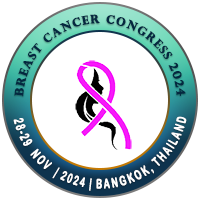
Dharmappa Basavarajappa
Indian Council Medical Research (ICMR), IndiaTitle: Burden of cancers in India - estimates of cancer crude incidence, YLLs, YLDs and DALYs for 2021 and 2025 based on National Cancer Registry Program
Abstract
Background: Cancer is the major cause of morbidity and mortality worldwide. The cancer burden varies within the regions of India posing great challenges in its prevention and control. The national burden assessment remains as a task which relies on statistical models in many developing countries, including India, due to cancer not being a notifable disease. This study quantifes the cancer burden in India for 2016, adjusted mortality to incidence (AMI) ratio and projections for 2021 and 2025 from the National Cancer Registry Program (NCRP) and other publicly available data sources.
Methods: Primary data on cancer incidence and mortality between 2012 and 2016 from 28 Population Based Cancer Registries (PBCRs), all-cause mortality from Sample Registration Systems (SRS) 2012–16, lifetables and disability weight from World Health Organization (WHO), the population from Census of India and cancer prevalence using the WHO DisMod-II tool were used for this study. The AMI ratio was estimated using the Markov Chain Monte Carlo method from longitudinal NCRP-PBCR data (2001–16). The burden was quantifed at national and sub-national levels as crude incidence, mortality, Years of Life Lost (YLLs), Years Lived with Disability (YLDs) and Disability Adjusted Life Years (DALYs). The projections for the years 2021 and 2025 were done by the negative binomial regression model using STATA.
Results: The projected cancer burden in India for 2021 was 26.7 million DALYsAMI and expected to increase to 29.8 million in 2025. The highest burden was in the north (2408 DALYsAMI per 100,000) and northeastern (2177 DALYsAMI per 100,000) regions of the country and higher among males. More than 40% of the total cancer burden was contributed by the seven leading cancer sites — lung (10.6%), breast (10.5%), oesophagus (5.8%), mouth (5.7%), stomach (5.2%), liver (4.6%), and cervix uteri (4.3%).
Conclusions: This study demonstrates the use of reliable data sources and DisMod-II tools that adhere to the international standard for assessment of national and sub-national cancer burden. A wide heterogeneity in leading cancer.
Biography
To be updated soon.

